Yet another tower is under construction in Downtown Denver!
Recently, the dual-brand Le Meridien/AC Hotel project at the corner of 15th and California broke ground. Developed by White Lodging (which built the nearby Embassy Suites and is wrapping up the dual-brand Hyatt), this project will rise 20 stories and include 488 hotel rooms in total, split 272 rooms under the Le Meridien brand and 216 under the AC Hotel brand. Click here to see our first post on this project earlier this year.
As you can see in these photos I took yesterday, work is underway:
Here are the only renderings of the project I’ve seen released so far:
I think the building looks fairly decent from this angle. However, don’t be surprised if the angle you can’t see—the side facing 14th Street and the convention center—is a solid blank wall. While I don’t know this for a fact, it’s an educated guess. As the close-up rendering shows, the new Le Meridien/AC Hotel tower will share a common wall with the small two-story structure where Bubba Gump’s is located, which is also visible on the right side of my second construction photo. The Bubba Gump’s building is neither a designated historic landmark structure nor a member of the Downtown Denver Historic District; therefore, it could be razed someday to make way for a higher-density development. If that were to happen and White Lodging had put windows on that side of their hotel, those windows could potentially be completely blocked by a new development next door, since there are no setback requirements in the Downtown Core District for the side interior property lines. Any hotel rooms that had their only window subsequently blocked by a new adjacent development could be rendered uninhabitable as Colorado regulations require every hotel room have “at least one window with direct and unobstructed opening to the outside.” A developer putting in a hotel or residential building with a vacant or underutilized property on an adjoining site is unlikely to risk having that happen. Consequently, there are several design options frequently used to address this issue.
Option 1 is the solid blank wall. White Lodging chose this option on their new dual-brand Hyatt Place/Hyatt House hotel at 14th and Glenarm (which opens this December). Here are two images that illustrate this condition. In the first image (from Google street view) we see the blank wall facing the side property line. The small two-story building adjacent to the hotel is not a designated historic landmark structure or a member of the Downtown Denver Historic District, so it and the tiny parking lot next door could be redeveloped. Interestingly, the small two-story building on the right is the Denver Press Club building which is a Denver historic landmark building. Assuming it would not be razed, the redevelopment site adjacent to the hotel would be only 50 feet wide, which is quite narrow to go vertical to any significant degree.
In the second image (from Ryan’s recent Hyatt post) we see the same blank wall but from the alley view. Note that both images show that the hotel rooms on this side of the tower are served by windows facing Glenarm and the alley, eliminating the need for any windows facing the side property line.
Option 2 is the blank wall with fake windows. White Lodging used this approach in their Embassy Suites Convention Center hotel. Here’s a Google Earth street view image showing this side of the hotel:
Since the surface parking lot in the foreground could be developed (let’s hope!), this side of the Embassy Suites would be the adjoining wall with that new development. Here we can see the use of fake windows as a design feature to make the facade appear a bit more interesting until such time as it is covered up by an adjacent new development. In the center is a narrow vertical notch where the building has been stepped back enough to allow real operable windows to be used. Should the site in the foreground be developed, you wouldn’t have much of a view from those windows, but there would be sufficient space for natural light and air to enter the windows.
Option 3 is a full setback from the side property line on the upper floors of the building. This is the approach taken at Spire, as seen in this Google Earth street view image:
The two-story structure in the foreground and the small adjacent parking lot represent a prime redevelopment site. But rather than having a 42-story blank wall on this side of Spire, the developers chose to step the building back about 20 feet from the property line above the podium base, allowing all residential units on that side of the building to have windows. Should the site in the foreground be developed with a tower, even one without any setbacks of its own from the common property line, there would still be sufficient space to allow for natural light to enter the windows of those Spire units. Here’s a Google Maps bird’s eye view showing both the Embassy Suites and Spire and their sides facing future redevelopment sites.
By the way, also in the image above in between Spire and the Embassy Suites is the 6-story Aloft Hotel that recently opened. It too used the “blank wall” option for its side facing the small building next door, as seen in this Google Earth street view image:
So why isn’t Option 3 the one chosen in all situations like this? Answer: Loss of developable square footage. In the case of Spire, their 20-foot setback on the upper 34 floors cost them about 68,000 gross square feet of developable space, according to my rough calculations. But if you have a larger site like Spire’s and the goal of having an attractive building on all four sides, losing that square footage is a price you’re willing to pay. But if you’re a national hotel developer like White Lodging that’s interested in maximizing their development potential and not the architectural legacy of their projects or the aesthetics of the downtown skyline, then you put up a blank wall on the side property line and figure some day it may get covered up by a neighboring building. And if it’s a particularly small or narrow site, doing a setback on the upper floors to allow for windows facing the side property line could create a floor plate configuration that may become unworkable for the proposed building’s program.
A required setback from the property lines on the floors above the building podium is the basic model for the point tower, which Vancouver BC has implemented to an extreme degree.
What do you think? Should the “point tower” be the required model for all new buildings in Downtown Denver above a certain height?



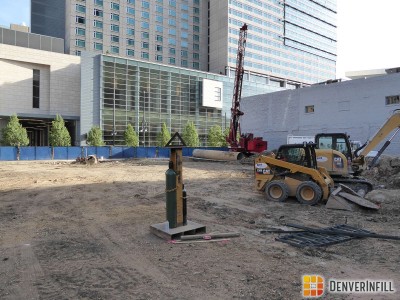









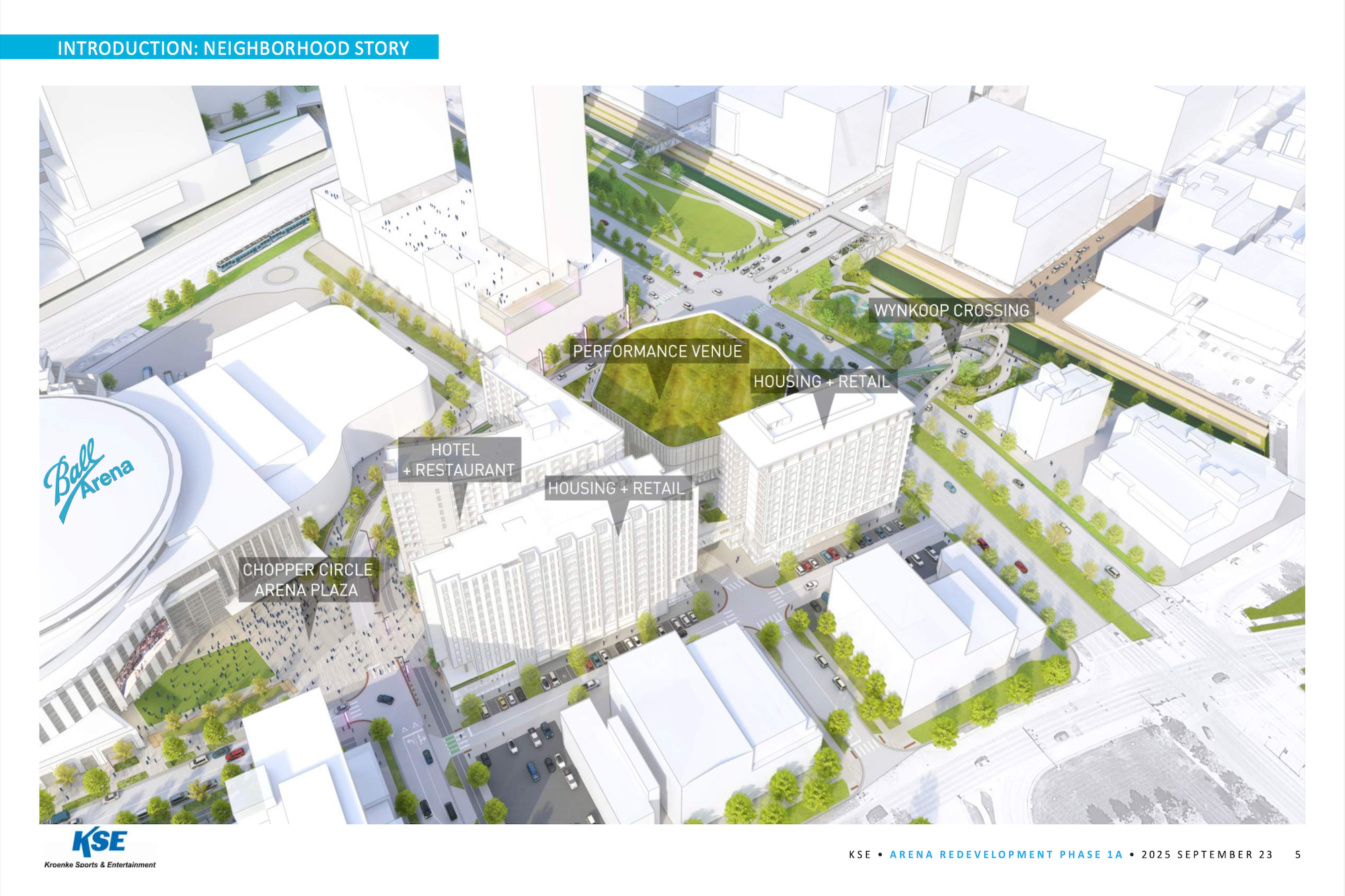
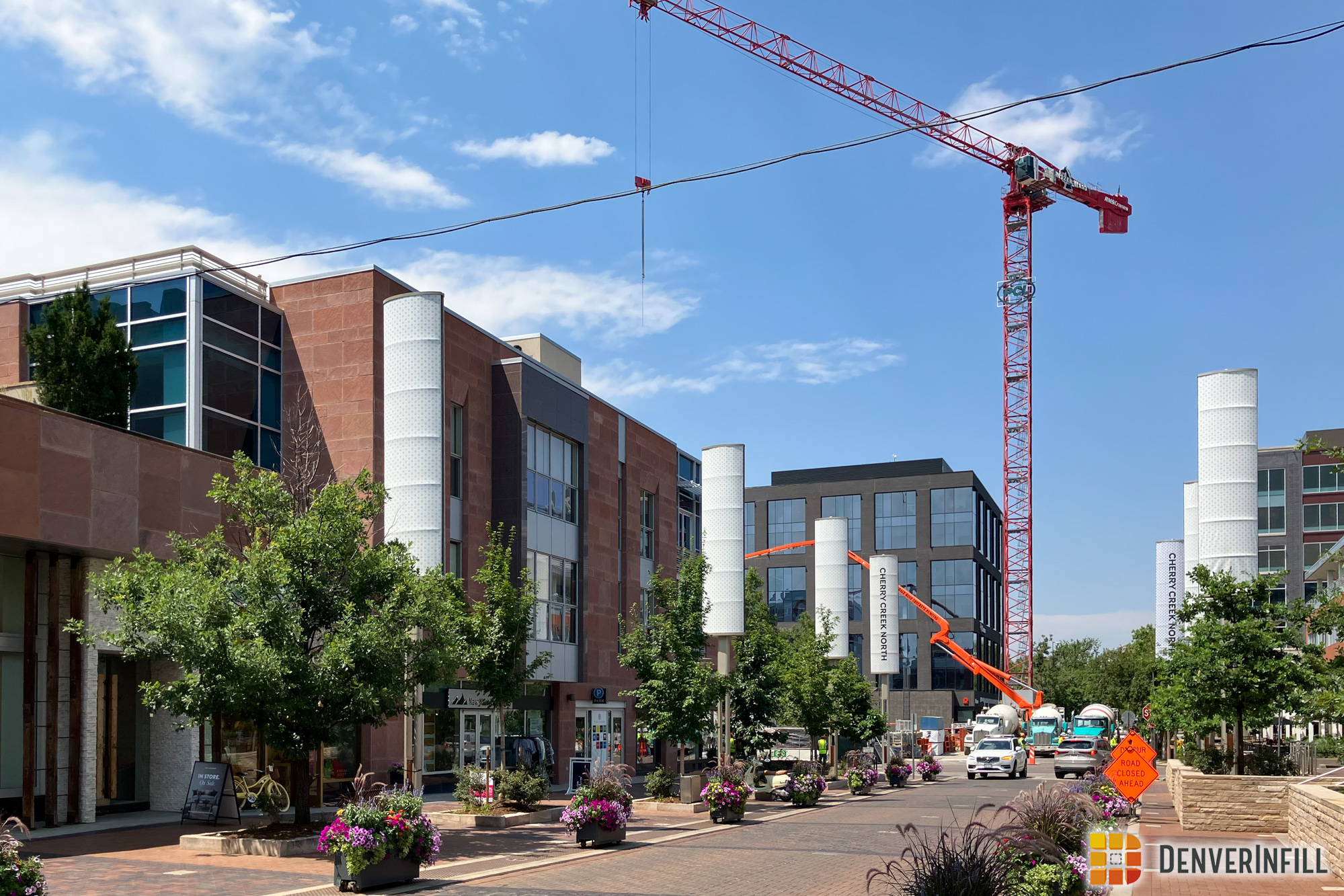
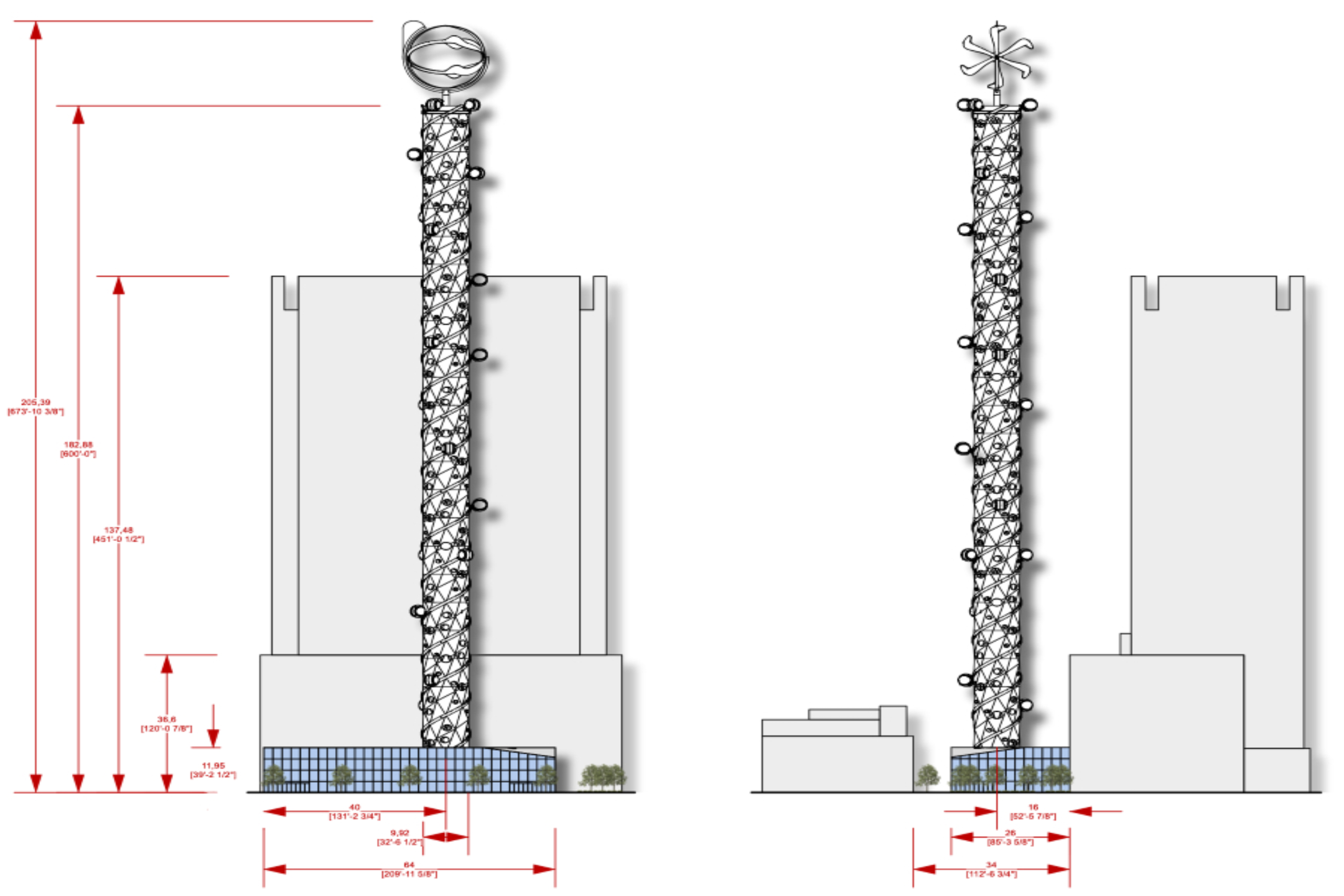




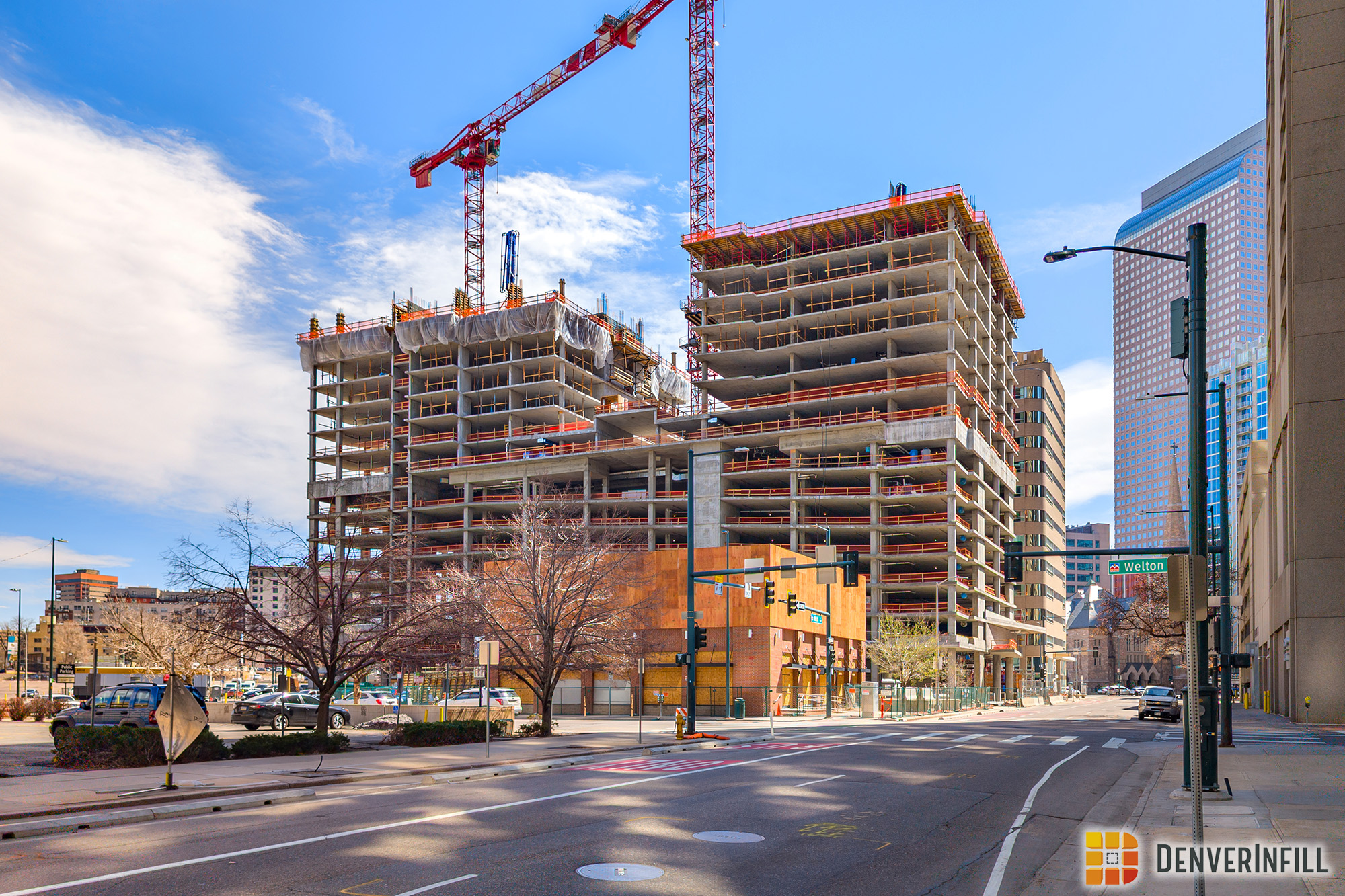

The plans for the Le Meridien/AC Hotel are on Denver.gov development map website. The wall adjoining Bubba Gump will be a blank wall but the side facing the alley will have columns of aluminum and glass curtain walls bracketing EIFS panels. In that respect, the design is an improvement over the dual brand Hyatt.
In regards to point towers, I think that mandating that form might be appropriate in areas of the city that are outside of the central business district like what the design guidelines for Arapahoe Square indicate.
Yes, absolutely! Thanks for taking the time to walk us through the typical options facing high-rise developers with regard to blank walls. In my opinion, high-rises with blank walls are major eyesores, detracting from the visual experience of a city. There is of course no guarantee that the blank wall will be covered up someday by an adjacent building of similar height. Denver should do much better than allowing developers like this to build unattractive buildings and/or buildings with huge blank walls (the new Hyatt Place-Hyatt House building being an very unfortunate example of both).
One other (sad) observation about the Hyatt Place. The blank wall is a definite eyesore when viewed from the library. What used to be a very satisfying mix of shapes and buildings (from the library’s plaza on 13th Avenue) is now marred by a vertical stack of nothing.
I would encourage art work or fake window approach but not require it. It is very reasonable for the developer to expect vacant or underdeveloped property next door to be developed in the future. It is unreasonable to expect the developer to ‘guess’ about the height of future development next door. I’m ok with the setback idea if the developer likes the concept – it should not be mandated. There have been many ‘eyesore’ walls in Denver. Most have disappeared. Another option is to just make the wall more architecturally pleasing – if it is pre-stress, insert some design, if brick, insert texture and articulation.
Ken, thanks for explaining why blank walls rise over Downtown. Which opens up the other architectural issue of the FLAT TOPS of most Denver high-rises. Your last photo, from your informative piece on Vancouver BC architecture a few years ago, illustrates that city’s requirement that buildings top out with ANYTHING BUT a flat top.
When square footage is the primary objective of building design, you end up with a skyline like Denver’s — a cluster of mostly big boxes standing on end. Very few slender, graceful profiles, with setbacks for balconies and decks for people, features which retain the human scale on tall buildings.
Los Angeles has a similar skyline of flat tops, with helipads mandated by a fire safety ordinance, to allow a rooftop “escape route” from a “Towering Inferno” fire like the one in a 65-story office building decades ago. Now, with better fire safety building designs, the helipad requirement has been dropped. New tall buildings rising in LA will have spires and other more interesting tops.
Let’s hope Denver’s skyscraper architecture is finally getting better, so the tallest features we see on the skyline are more monumental, interesting — and less dull.
Great post, Ken! One thing that we all need to remember is that despite the recent boom, Denver is not Vancouver and will never command (at least in the foreseeable future) the kind of condo demand that Vancouver has in the last decade and a half despite the recent construction boom. I’d hate to put in too many requirements that keep projects from penciling out so, ideally, I’d like to see incentives (rather than requirements) that promote some sort of fake painted windows or art covering the blank walls along with at least a setback or two on the top-most floors, which would allow for a handful of windows. A tiny setback on the top floors would be the least likely section of the building to be covered up and would help keep the skyline less boxy. Additionally, when the blank walls are covered up by another building, it actually looks quite nice. I prefer that over the point towers.
Denver is sadly lacking in design requirements for towers with zero space between whatever the expected use for the interior at time of occupation and Vancouver’s view is an excellent start. Why not class up our downtown rather than have one solid wall of structures?
Let’s say after a modest height such as the Spires require at least a 15” or 20′ setback.
The Bubba Gump building WILL be historic as soon as it goes under contract to be developed, since this is the only requirement in Denver for blocking development by any random citizen who feels the urge.
Good point Aaron!
The parking lot at the corner of 14th & California will likely be developed sooner than later. So any blank wall here will likely be covered up. I imagine any development there will raze the Bubba Gump building, likely a hotel since it’s directly across from the convention center.
Doesn’t anyone in Denver use the “Blank Wall Covered By Giant Mural” option?
It’s quite popular in other cities.
P.S. Provides for lots of contracts for artists who paint huge murals.